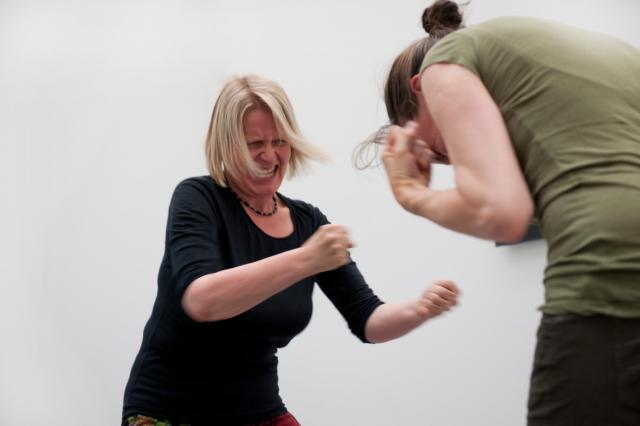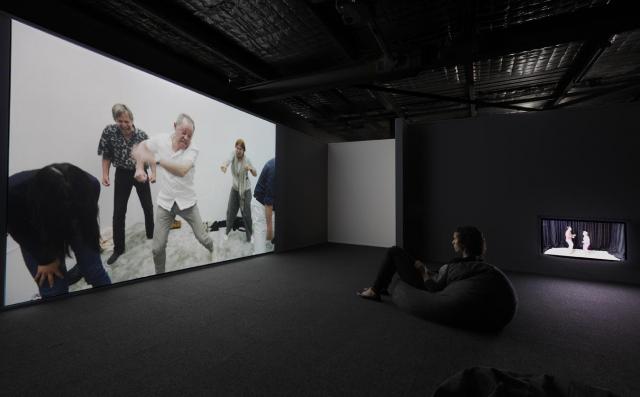The Way We Do Things—Destabilized
I am interested in the ephemeral and the invisible dimensions of the processes that constitute our daily life… I am not specialized in any particular media. But I am interested to locate my work at the edge between art and what we believe to perceive as so-called ‘reality’. I like to play with modes of perception and with the fact that my art is sometimes not identifiable as such, but sneaks into existing mundane systems or co-exists parallel to them.
— Dirk Fleischmann, ‘Artist Statement’, 2010
Traditionally, albeit in variable ways, art has aspired to shift our perceptions, to create new ways of seeing, thereby rendering visible the seemingly invisible. And contemporary art is no different. Yet the ways of making art today—the contemporary means of creation—are so different from previous eras that any artist visiting from another time or dimension—perhaps in their own ‘Tardis’—would no doubt struggle to identify the art of today.
Consider, for instance, the advent of new communication technologies and digital media, such as digital video recorders, computer graphics applications, web-streaming technologies and so forth. While a new generation of artists have embraced and exploited these media for purpose of experimenting in and furthering their artistic practice, the development of ‘user-friendly’ production tools has also seen a significant redistribution of the means of creation. These tools allow their users not only to create their own ‘media content’ but also to reproduce, recombine and manipulate (to ‘quote’, ‘juxtapose’ and ‘repurpose’) popular cultural texts, after the fashion of the pop artists of the 1950s and 1960s, if not also the ‘do-it-yourself’ ethic of the Fluxus movement.
So what is art in an age when everyone is invited to be a creative producer, when art-making is utterly everyday? How do we identify art in a culture of remix, where juxtaposition and repurposing are the norm?
Or is it, perhaps, that the force of renewal in art and aesthetics today derives less from attempting to identify what could make art special than from simply attending to its engagement with the everyday. For one trajectory that we’ve noticed in the moment of contemporary art points towards practices that work with everyday ways of doings things and understanding things only to shift them or relocate these ways of working and seeing, sometimes through inhabiting the roles or perhaps through displacing them entirely. These sorts of works shift our perception of both art and reality—making us wonder at the power and possibilities inherent in the everyday.
One such artist is Melbourne-based Eugenia Lim, whose transdisciplinary video, performance and installation work has been exhibited nationally and internationally. Lim’s work explores questions of race, identity and representation, but usually with a humorous as much as a critical eye. Often playing ‘the central character in her videos and photographs’, as Jessie Scott notes, Lim ‘inhabits or “performs identities”’.
Central to the question of art’s engagement with the everyday is Lim’s 2012 performance, Stay Home Sakoku: The Hikikomori Project, which was included in the 5th Experimental Biennale of Media Art and the Melbourne International Arts Festival, but was also performed online, with a live web stream of the performance being an integral part of the work. Exploring Japanese hikikomori (shut-in) syndrome and online communications, Lim’s performance took place more than 30 years after Tehching (Sam) Hsieh’s series of one year performances, in which he sealed himself in a cell in his studio and subjected himself to continuous solitary confinement for a 12-month period. Crucially, though, where Hseih denied himself any form of communication, declaring that he would not ‘converse, read, write, listen to the radio or watch television’ during his confinement, Lim took with her all that she ‘need[ed] for a digital life’, and throughout her performance she engaged in online chat and updated the project blog site, posting photos, animated gifs and links to YouTube videos and articles on the web.
What is it to perform the everyday life of a shut-in, in the age of online communications? What does Lim’s work say about contemporary forms and notions of ‘everyday communication’, when their destabilization by way of artistic performance occurs not through ascetic abstention, as with Hsieh, but through hyper-affirmation?
Eugenia Lim, Stay Home Sakoku: The Hikikomori Project. Trailer.
Stuart Ringholt is another widely-exhibited Melbourne-based conceptual and performance artist whose work speaks to the everyday. Author of Hashish Psychosis: What It's Like to Be Mentally Ill and Recover (2006), Ringholt, according to Frieze magazine, ‘uses his art to explore the limits of what is considered normal’. Making use of a range of media, including video, sculpture and performance, Ringholt’s work manages ‘to repurpose and morph objects that normally have no business conversing in order to rid them of their familiar associations’.
Such repurposing is taken to another level altogether in Ringholt’s Anger Workshops and similar performances, which are modeled on personal development and group therapy workshops, working with everyday affects of fear, anger and embarrassment, and engaging them not only as aesthetic ‘themes’ but also as the very materials or media of the performance. Such workshops destabilize both the galleries in which they take place and their audiences, who in the course of participating re-engage with how they ‘do’ anger as much as with how they ‘do’ ‘art’.
Two other projects—The Home Art Project and House Work—take us right to the heart of the notion of the everyday: the home. Made within months of each other in 2011, the two projects may seem similar but are in fact quite differently framed and conceived.
The first of these, The Home Art Project, is a ‘Climate Commission’ produced by the City of Melbourne Arts and Participation Program and TippingPoint Australia. TippingPoint is voluntary and not-for-profit network of artists, scientists, politicians and activists who foster conversations about climate change, and empower artistic responses to the phenomenon—its causes, impacts, and solutions. Having run for the last two years, The Home Art Project began in 2011 with invitations to households to perform, in their own homes, a movement designed specifically for the household by Australian dancer and choreographer Lucy Guerin. With the goal of making art local in its creation and presentation—thereby fostering sustainable approaches to art-making—the pieces established literally the most familiar of everyday scenes as a site of artistry and performance.
Lucy Guerin and Paul, Georgia and Ben, Home Art 2011.
Performance artist and member of the Sydney-based collaborative practice outfit Brown Council Diana Smith offers a different take on the home in her House Work project, which was made in Sydney for the Walk series at Performance Space in 2011. House Work took audiences on a walking tour through the private spaces of artists’ homes, in the inner city suburbs of Redfern and Waterloo. Each household of artists was invited to create a performance or installation that subtly transformed their domestic environment for one day only, inviting the audience in to experience these reconfigured personal worlds. Through this series of exchanges, the domestic sphere of the ‘home’ became a site for artistic practice and dialogue, blurring and destabilizing, once again, the boundaries between art and life.
Diana Smith, HOUSE WORK.
Art, then, as the way we do things—destabilized. While such artistic engagements with the everyday are far from unprecedented, they grant us the chance to reflect on art’s (ongoing?) renewal: has the relation between art practice and everyday life shifted at all since the time of art moments like Fluxus or intermedia, or since the relational aesthetics of the 1990s? Are new questions (or are they old?) impelling artists in the context of today’s socially mediated everyday? What’s at stake for these sorts of art practices, politically and culturally? And what’s at stake for audiences of these art practices?
In this vein, we might note that the engagements with the everyday in these works speak to the question of the contemporary identity of art precisely through their renegotiation of art’s relationship to the world.
While one consequence of this renegotiation is an extension of art’s destabilizing force to encompass aspects of existence that appear most removed from art by virtue of being most mundane, an alternative implication also plays out. In the context of new media creation and remix culture, in particular, the disavowal of detachment found in works such as Lim’s Stay Home Sakoku and Smith’s House Work may also be read within a rethinking of art’s ‘specialness’: art as the everyday-with-a-difference.
In view of the question of renewal, moreover, this rethinking can be read as an affirmation rather than an abnegation. Art’s everydayness-with-a-difference, then, works as a difference within ‘the’ everyday. Online performance as much as art-gallery installation: this is how we do things—destabilized.
Ctrl-Z: New Media Philosophy
ISSN 2200-8616






